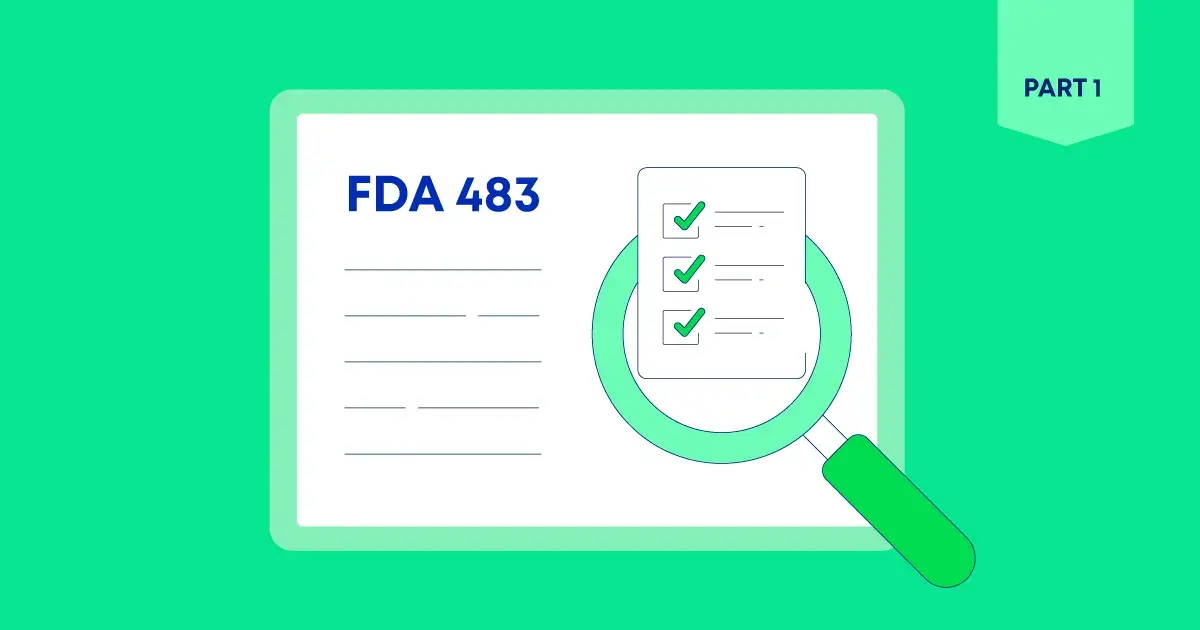
Published on March 22, 2023
Reading time: -- minutes
Last updated on November 4, 2024



The European Union has released the new (and very much anticipated) GMP Annex 1 revision after 14 years of development!
The GMP Annex 1 has all the manufacturing requirements sterile drugs both made in the EU and imported products. This 2022 version presents an upgrade to 59 pages from the original 16 covering the following topics:
The scope of the annex makes it very clear about the importance of QRM:
This Annex provides general guidance that should be used in the design and control of facilities, equipment, systems and procedures used for the manufacture of all sterile products applying the principles of Quality Risk Management (QRM), to ensure that microbial, particulate and endotoxin/pyrogen contamination is prevented in the final product.
In fact, the update stresses that an effective risk management system needs to be integrated into all areas of product lifecycle.
Which, in turn, takes us to the next point on how to apply the GMP Annex 1 Revision.
The implementation of a QRM system over the lifecycle is not as simple as it sounds.
And even then, once end-to-end risk-assessment is completed, a lifecycle management plan should be put into place. This will help managing both product and any associated risks which are not necessarily connected to manufacturing.
ICH Q9 tells us that managing any unusual situation in the LCM or QRM contexts requires:
Risk Identification and Analysis requires effective knowledge capture, process mapping and the definition of unit operations with specific attributes.
This implies, firstly, to identify, to understand, to quantify and to rank risks as well as being able to formulate risk control strategies.
Then, the next steps are:
So, how can we streamline this process? How can we apply the principles of QRM throughout the Lifecycle in accordance with the GMP revision?
The answer is: through Digitalization of Quality Risk Management.
When we talk about Quality Risk Management Digitalization we mean the departure of the Excel-based, silo-divided routine where a historic is not kept and where compliance depends on more variables than it should.
Once you reach it, you will unlock several meaningful benefits that impact business and mission-critical goals such as:
These revised requirements will become mandatory and take effect on the 25th of August 2023.
Until then, there’s time for you to implement a Digital QRM System that guarantees your compliance over the lifecycle.
With our risk management platform and our senior experts, our team can assist you to identify, quantify, and prioritize risks for a robust business continuity plan!
If you want to know more about our services, check out our page and don’t hesitate to reach out!
-1.jpg)
Pharma has embraced digitization in many business lines, but validation has been one of the few processes to remain manual. Here are 12 reasons to make the switch! (Part 1 of 2)
By Lisa Weeks
Read
Explore why cleaning validation remains a top FDA 483 observation, its regulatory history, and ongoing importance. Part 1 of our Future of CV series.
By Rui Almeida
Read
Learn about the requirements of the Annex 1 revision and how to ensure compliance with a digital risk management platform.
By Ângela Martinho
Read